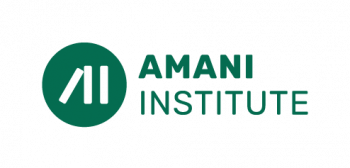Applications are closing soon for the 2014 class of the Certificate in Social Innovation Management. Please Apply Now and share it with people who would be interested.
This article is cross-posted from its original publication in the Impact Entrepreneurs blog of Portland State University.
This post was contributed by guest writer Marie Mainil, a political scientist and Business and Product Development Consultant with Amani Institute.

Recent news have pointed out that institutions from Federal, State, Private, and philanthropic sectors are on a mission to make higher education more accessible to low-income students. But what exactly do we plan on making more affordable?
While reaching college is a challenge for low-income students in the US, there is also an achievement gap once they’ve arrived. The graduation rate for low-income students is around 25 %, less than half the national average. We also know that student loan debt has now surpassed the credit card debt that played a significant role in the great recession.
Both President Obama and Secretary of Education Arne Duncan have called education the civil rights issue of our generation. Post-secondary credentials, in fact, tend to be a prerequisite for 21st-century jobs. Yet, despite high unemployment rates among young people around the world, employers across sectors complain that they find it difficult to hire suitable talent. Employers face the prospect of hiring recent graduates whose education may not afford them the skills they need to meet the demands of the current global economy.
Recent higher education policies and programs have been successful in expanding opportunities for students (of all backgrounds) in the STEM (Science Technology Engineering Mathematics) field. This is great, given that American students fare relatively poorly in math and science. But why stop at STEM?
One current policy provides for grants to develop innovation within the private and philanthropic sectors in order to improve student achievement in general. Current policy also emphasizes a set of measures designed to strengthen community colleges, as well as to hold colleges and universities accountable for cost, value and quality. The launch of the College Scorecard is in fact meant to empower students and families with more transparent information about college costs and outcomes. Yet extra steps are needed to strengthen the university education we are trying to make more affordable.
There is a link between university curriculum and youth unemployment. Studies consistently show that the attributes employers most value in prospective employees are largely things not received from a typical university degree. This is especially true in the social change sector, a sector favored by the millennial generation. Employers in this sector rank leadership, problem-solving, initiative, project management skills, and communication skills as more important than academic and analytical/quantitative skills (which is not to say, of course, that those are unimportant). See here and here for more.
Since, according to employers, soft skills matter has much as hard skills, opportunities for leadership development, problem-solving skills, empathy, cross-cultural fluency, and self-mastery need to be systematically baked into higher education training programs—for the sake of both future employees and job creators. While still along the margins of the mainstream, an increasing number of outstanding organizations are working on providing such opportunities. See theTransformative Action Institute, Impact Entrepreneurs Leadership Programs, Global Citizen Year, Watson University, Mycelium, Uncollege, or Global Health Corps, to name a few.
One additional organization institutionalizing the skills above with the goal of helping reform the higher education system is The Amani Institute (full disclaimer, I am a consultant there).
The Amani model focuses on developing 4 essential skills, which are also the core values by which the Amani team measures its impact:
- The vision to see what needs to change, to see what is not, and ask why not. This skill involves looking beyond one’s own position and identifying what one can do, such as setting a new direction for self, an organization, or communities.
- The courage to step into the unknown, and into the possible, without having all the answers, holding steady in the face of both the attractions and perks of the status quo.
- The empathy to work effectively with others, standing up when others can’t (or won’t).
- An ethos of change-making towards a more peaceful and just world, building, not just critiquing, deploying not just skills and knowledge, but one’s whole being.
Amani students, through semester trainings and apprenticeships, develop a professional toolkit and networks, and come to understand the personal journey impactful work requires in terms of effectiveness and personal sustainability. It is also worth noting that The Amani Institute does all this while reducing the traditionally high cost of top-class global education. The Amani model is certainly food for thought in the context of upcoming pushes for higher education reform.
America needs a workforce that is skilled, adaptable, creative, and equipped for success in the 21st century global marketplace. If we are going to create more pathways to higher education for all Americans, we should also ensure that higher education provides pathways to 21st-century jobs. This requires paying attention to the link between embedding problem-solving skills, empathy, cross-cultural fluency and self-mastery in higher education, and creating/filling 21st-century jobs that bring societal returns.






